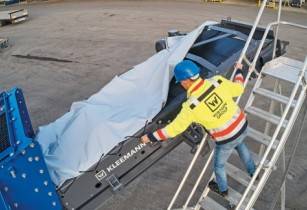SSAB has launched Strenx 1100 Plus strip steel, aiming to provide high-quality welding and bending performance in booms, frames, cranes and other lifting equipment
Part of the 1100 MPa (megapascals) range of Strenx performance steels, Strenx 1100 Plus aims to bring advances in weld seam strength for the lifting sector.
This new steel grade is expected to give customers lighter and stronger equipment, increasing payload, improving fuel economy and boosting overall performance and productivity.
Eliminating weld weaknesses
According to SSAB, weld seams can represent weak links in the highest grades of structural steels such as S1100 and S900.
With Strenx 1100 Plus, weld weaknesses are set to be virtually eliminated because the strength, elongation and impact toughness properties of the welded area meet the minimum guarantees of the base material, the company noted.
Advanced design options
The optimal combination of strength and toughness of the welded and heat-affected area provides a major benefit to the design engineering process. The design can be based on the same minimum static strength for the entire application, depending on the design rules.
SSAB further added that Strenx 1100 Plus is designed for the applications that require welded joints. They are able to weld at the room temperature as compared to other high yield strength steel products in the market.
Strenx 1100 Plus benefits include:
? Good weldability with matching strength, elongation, and toughness across a weld
? Strenx 1100 Plus does not require any preheating when welded based on CTS tests according to ISO 17642-2:2005
? Formability and surface quality
? Superior consistency by close tolerances that allows predictable behaviour in the workshop
? Optimal combination of strength and toughness in the welded area and heat-affected zone



























